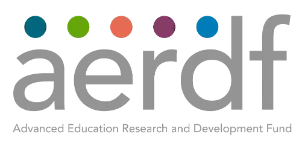Introduction
Lifelong learning starts with self-awareness. When students recognize their strengths and understand how they shape their learning, they don’t just participate—they take ownership. That’s why student co-design is at the heart of Assessment for Good’s (AFG) work. By collaborating with learners, we ensure that assessments reflect their experiences, needs, and potential. To dive deeper into this approach, we are excited to talk with Dr. Lauren D. Kendall Brooks, Research Scientist for AFG, who has led many student interviews and focus groups that shape both the development of assessment constructs and the design of assessment environments. In this conversation, she shares more about AFG’s approach to collaborating and codesigning with students to co-create meaningful assessments, and shares stories of students playing an active role in their own learning, and ours!
What is assessment and why is it the focus of AFG?
Assessment tells us what’s important to our culture. Traditionally, if a student studies something that isn’t on the test, it’s often framed as studying the “wrong” thing, rather than a reflection of their learning. This is the nature of summative assessment. At AFG, we aim to impact formative assessment, which is a type of assessment that focuses on understanding what students know and are learning in the moment–allowing educators and caregivers to intervene and support students in real time.
What does it mean for assessment to be inclusive and effective?
Formative assessment is inclusive when students are able to show what they know in ways that are authentic to how they learn and understand the world. Assessing them in environments that feel comfortable for them, safe for them, and in ways they’re able to best express themselves, makes it effective. Assessment should provide students with information that supports continual learning. Traditionally, assessment is thought of as the end of learning when it is actually just the beginning – the beginning of being able to use the knowledge that you’ve gained to shape your learning journey.
How is AFG engaging in assessment development and design differently?
We see our students as people, not numbers or data points. Their perspectives matter because they are the experts of their own lived experience–they understand how they learn and process information better than we ever could. By combining our expertise in assessment and students’ deep understanding of themselves, we find that middle ground where their voices shape what and how we measure.
This became especially clear to me in a conversation with a student when I used the phrase, “students like you.” She immediately questioned it: “What does that mean? Like other third-grade Black girls?” I paused and clarified, “No, I mean students who may share your interests or preferences.” But she made it clear—she didn’t see herself as similar to other third-grade Black girls in that way. By the end of the interview, I recognized what she meant. I also realized there were likely thousands of other third grade Black girls who, like her, don’t feel seen.
Her insights directly influenced the questions we included in our assessment. I had planned to invite her to participate in product testing–where we work with students to test and refine our playful assessment tools–but when I asked her if she wanted to play a game next time, she surprisingly replied, “No – I want to keep doing this because sometimes kids that are different like me need help with these questions.” She saw herself as a real voice for other third grade students who don’t enjoy assessment. This is exactly why we listen.
A cornerstone of AFG’s approach is codesign. How do you define it?
Codesign is working with and for students. Codesign is collaborating with partners from the start, giving them the roughest version of a plan, a research question, or prototype and asking questions like: “Am I in the right direction?” “Can you show this to me?” “What do you think about this?” “How would you change it?” “Does this even make sense?”
It’s giving them a storyboard idea before you get to a prototype, or a drawing on a page before they are given something they can touch and feel, and asking them to co-create the path forward.
How are students who are a part of AFG’s codesign process affected by this engagement?
Students get really excited. I will have heard feedback from five different students on that same day, each eager to share their thoughts. By letting them know that their input is valued, I find that I get to the richness of codesign. It’s them correcting me, showing me, teaching me. “Actually, we would use this word instead.” “That word doesn’t make sense here.”, “I would change this.” , “This looks weird.” , “It reminds me of this negative thing” (like a TV show or video game).
I think this allows them to feel valued–they see their voices shaping something real, something that will reach others. I always ask them, “What does it feel like to know that you have given feedback on something that will help thousands of kids?” Their responses are powerful:
- “This is really important because not everyone has someone to talk to.”
- “Sometimes people have problems and they don’t know where to go and this may help them think about things differently.”
- “Kids don’t have anybody to talk to and this may be a safe place. Not everybody has that like I do.”
They start getting very deep. They want to help other people because they recognize that not everyone has a trusted adult and this could help and support them.

It’s apparent that trust is crucial in order to codesign effectively. How do you approach building trust with students?
I am as honest with them as possible. I try to give them agency up front, reminding them repeatedly that they don’t have participate. I read them their consent form and give them a chance to ask questions. I let them know what is going to happen along the way at each step. They can choose not to answer any of my questions. We use pseudonyms for anonymity–they come up with some fun ones–but I always make sure to remember their real name at the end. I thank them for being there before they go.
It’s also important to allow them to see the mistakes in the prototype. They have seen my spelling errors, perhaps doubling a question. When they point out the mistakes, they see that this is a real prototype, and know that I am really listening to them. I hear a lot of the same things, but I always ask them to keep going. I ask them to clarify, which validates their responses. We have conversations about what they mean exactly. They get to correct me. Eventually, they give me lots of explanation without me having to prompt them. I love when we students come back because they can see the changes that have taken place. They can see that they are part of the process.
Conclusion
Through co-design, students move beyond being research participants—they become collaborators, shaping something bigger than themselves. When we truly listen, we don’t just build better assessments—we help students see their own power in shaping the world around them. At AFG, we are excited to continue engaging students, educators and their caregivers in codesigning asset based, formative assessments that measure the critical skill that power learning–we look forward to sharing what we’re learning along the way!




